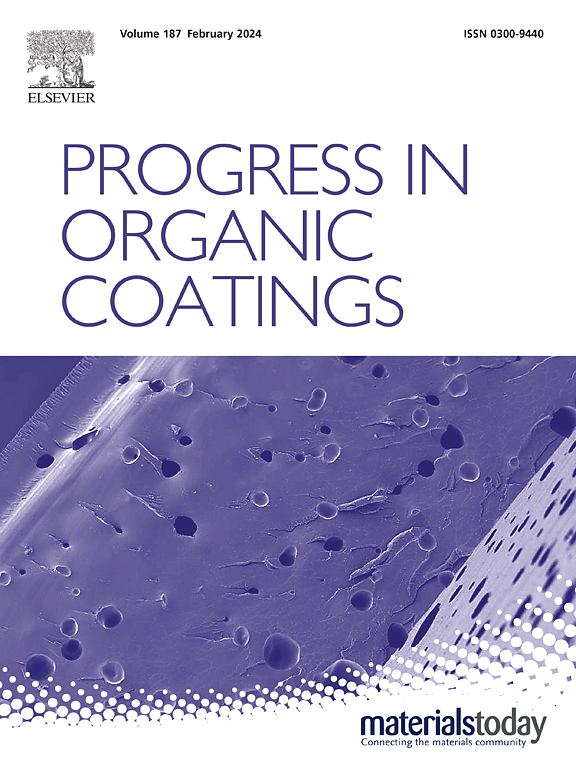Curing reactions of epoxy powder coatings in perspectives of chemical mechanisms and strategies
IF 6.5
2区 材料科学
Q1 CHEMISTRY, APPLIED
引用次数: 0
Abstract
Powder coatings are the fastest growing variety of coatings due to their high compliance with the standards of 5E. Particularly, epoxy powder coatings with bisphenol A diglycidyl ether (BADGE) as the resin matrix are widely used in building materials, ship pipelines, electronic devices and automotive furniture decoration materials, attributed to their excellent mechanical properties, corrosion resistance, electrical insulation and good appearance. The properties of the cured products of epoxy powder coatings are dominated by the curing systems. This review discusses the types, reaction principles, characteristics of curing agents and accelerators that participate in the curing reaction with different epoxy resins. Particularly, curing agents (amines, anhydrides, phenols, polyester resins, acrylic resin, polycarboxylic acid and its derivatives), curing accelerators (tertiary amines, imidazole and its derivatives, substituted urea, metal coordination compound and Lewis acid) and reaction mechanisms in curing systems based on BADGE for epoxy powder coatings are compared. Different from the previous reviews of powder coatings focusing on the formulation optimization and performance improvement, this review interprets curing reactions of epoxy powder coatings from the perspectives of chemical mechanism and selection strategy.

求助全文
约1分钟内获得全文
求助全文
来源期刊

Progress in Organic Coatings
工程技术-材料科学:膜
CiteScore
11.40
自引率
15.20%
发文量
577
审稿时长
48 days
期刊介绍:
The aim of this international journal is to analyse and publicise the progress and current state of knowledge in the field of organic coatings and related materials. The Editors and the Editorial Board members will solicit both review and research papers from academic and industrial scientists who are actively engaged in research and development or, in the case of review papers, have extensive experience in the subject to be reviewed. Unsolicited manuscripts will be accepted if they meet the journal''s requirements. The journal publishes papers dealing with such subjects as:
• Chemical, physical and technological properties of organic coatings and related materials
• Problems and methods of preparation, manufacture and application of these materials
• Performance, testing and analysis.
 求助内容:
求助内容: 应助结果提醒方式:
应助结果提醒方式:


